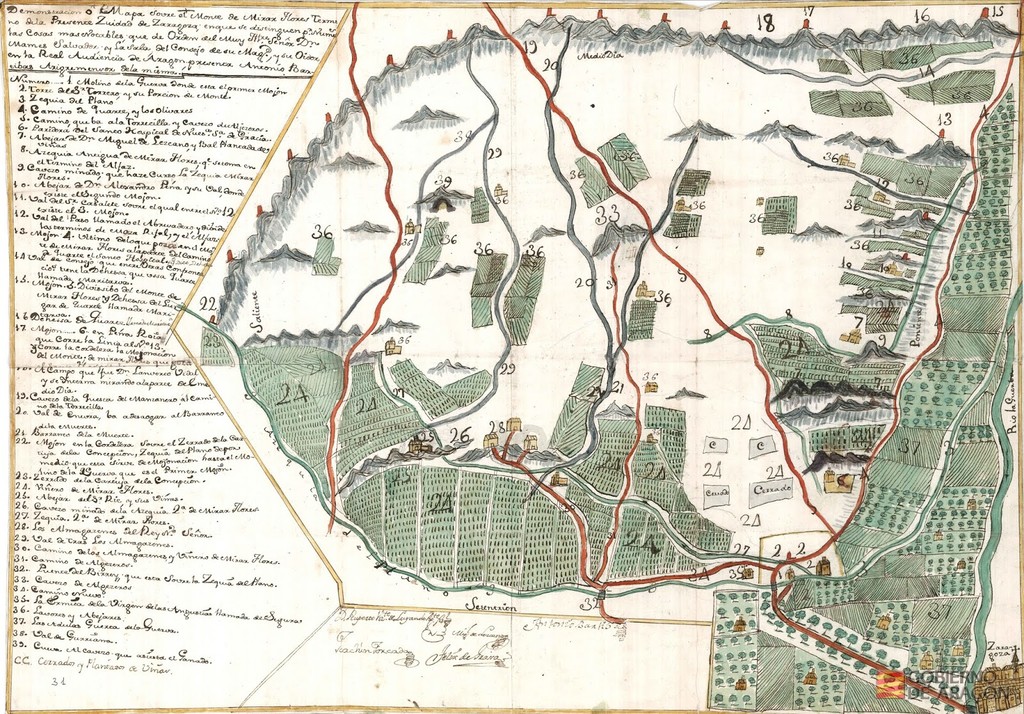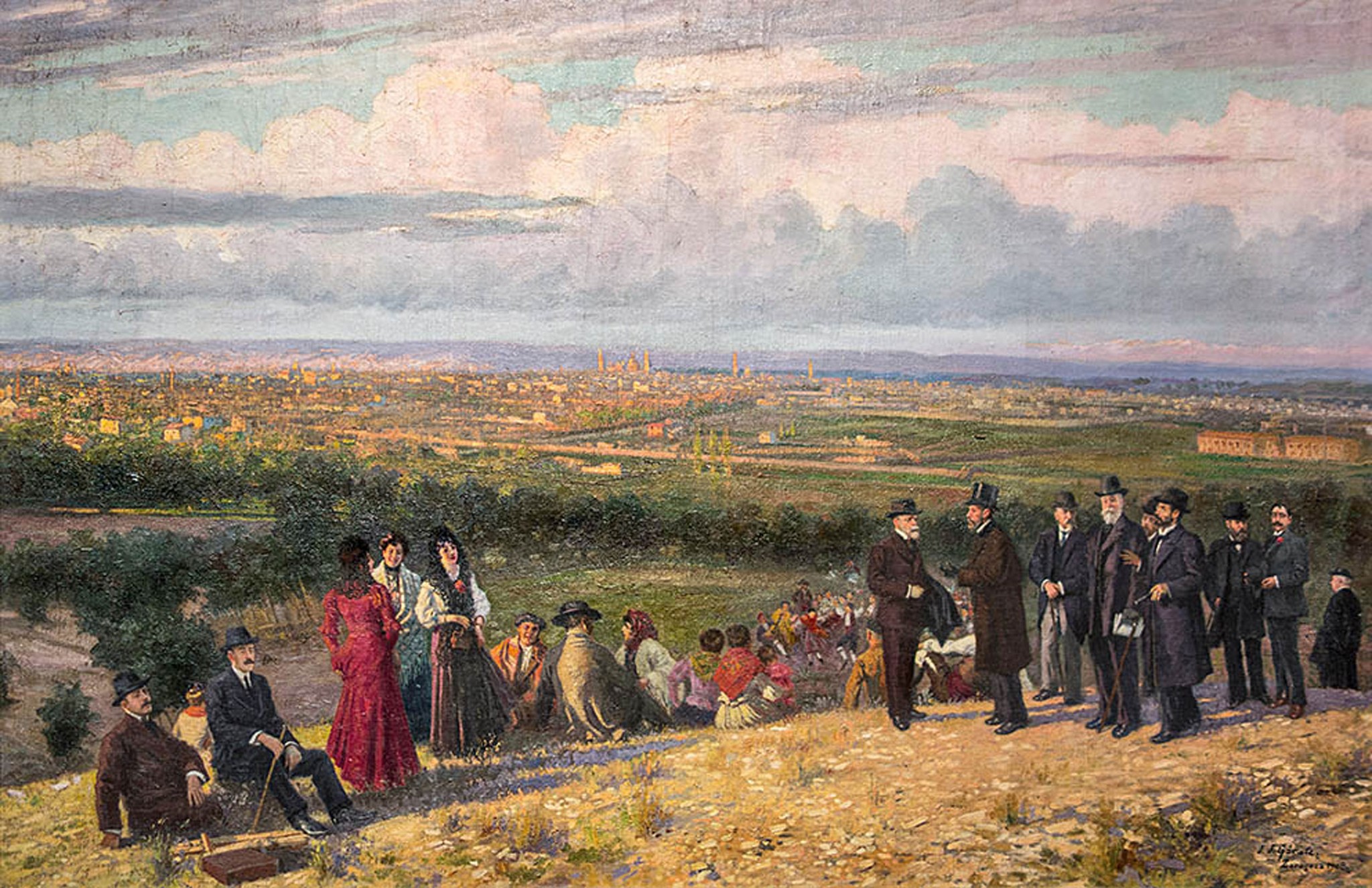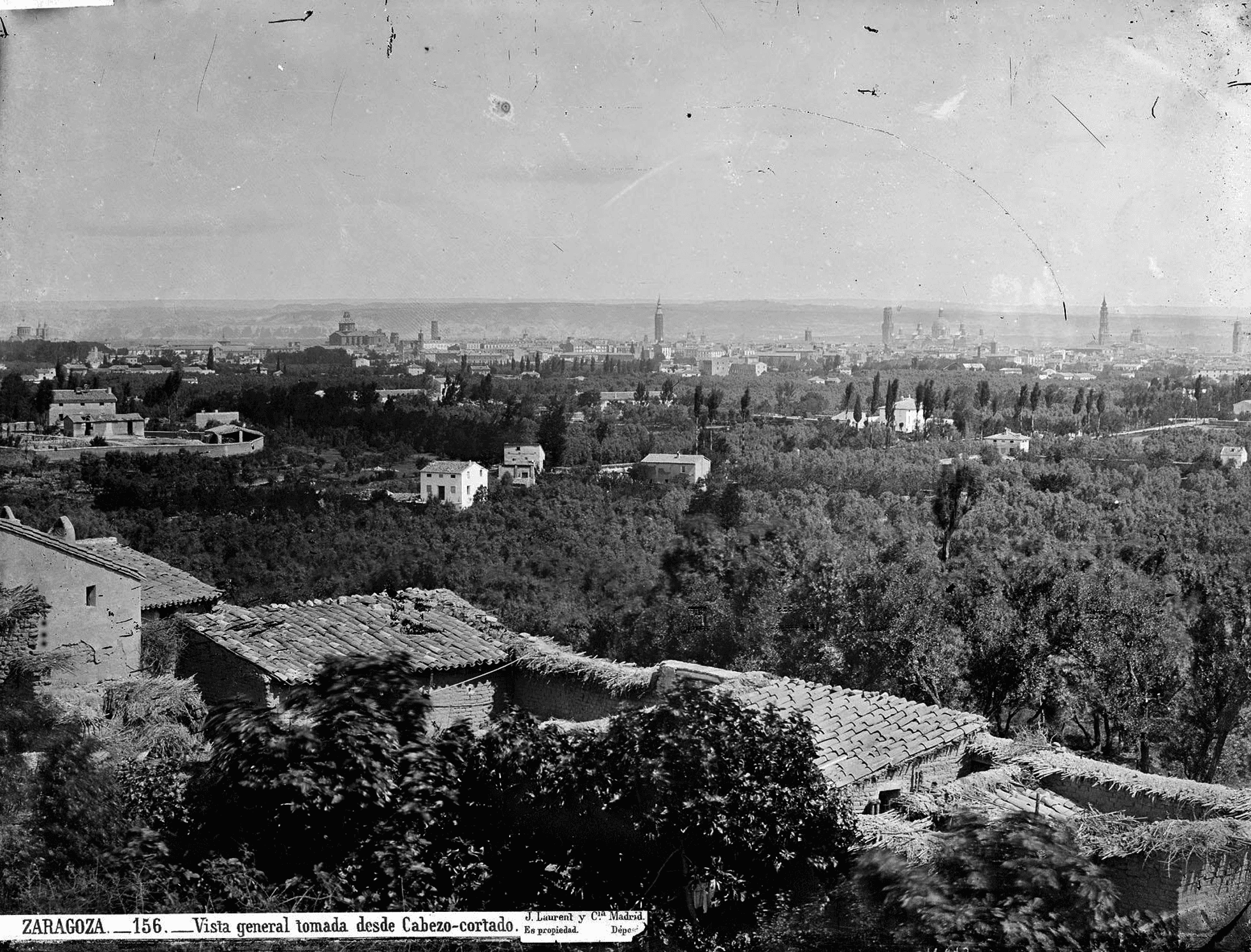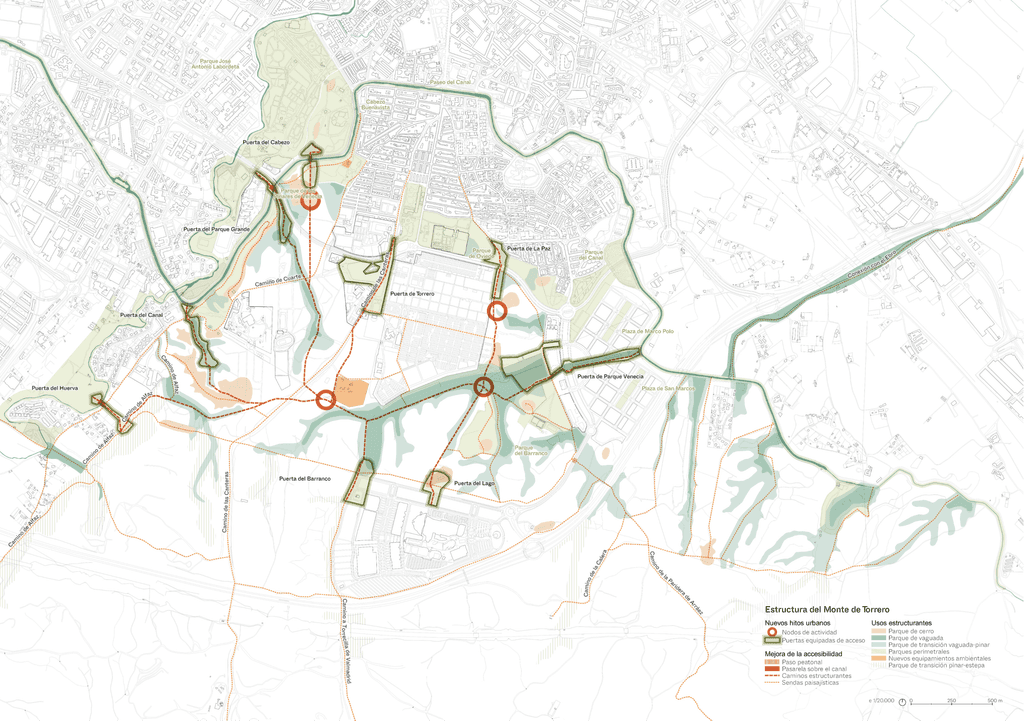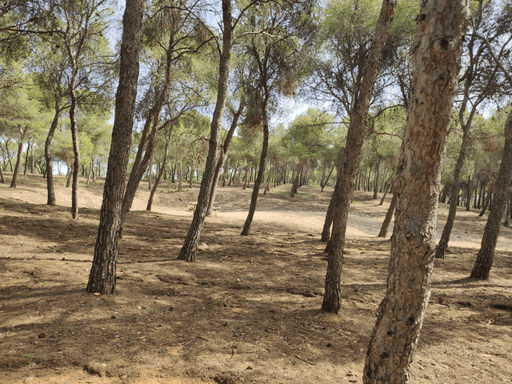Monte de Torrero
A strategic vision
With Pablo de la Cal (Cerouno Arquitectos) and Aitor Gutiérrez
Study, Zaragoza City Hall, 2024
The completion of the Imperial Canal of Aragon at the end of the 18th century marked a milestone in the development of the city of Zaragoza, enabling navigation, improving agriculture, and facilitating the establishment of new industries. The Port of Miraflores became the central point, comprising a complex of customs buildings (warehouses, inn, granaries, church, etc.) located at the lower part of Monte de Torrero. Around it emerged a suburban growth of towers and houses for the workers of the nearby quarries. Wealthy families, following hygienist trends, promoted transforming the mountain into a new urban park, dubbed the "Little Venice" of Zaragoza. Pine forests were planted during the 20th century, and thanks to the canal's water pumping, they expanded to cover 400 hectares. However, they have always been pressured by the expansion of the Torrero and La Paz neighbourhoods, and by large-scale facilities, urban developments, and infrastructures placed without a comprehensive vision. The study thoroughly analyses the pine forests regarding their ecology, uses, and mobility. It identifies their values and vulnerabilities and generates a series of implementation proposals to enhance their function as a metropolitan park. The ecological implementation aims to transform the homogeneous pine forest into a vibrant forest area, highlighting its topographic and ecological conditions, reclaiming agricultural spaces in higher areas where the soil profile is unfavourable for pine forests, and promoting more forest diversity in the valleys where there is more water and better soil. It is complemented by water management capable of harnessing runoff and reducing flood risk. The urban implementation clarifies access to the park with gates connecting to main routes or activity nodes, allowing the use of the pine forest as a pedestrian connector. Internal routes are prioritised and limited to avoid overloading the undergrowth and facilitate its natural regeneration, eliminating roadways and enhancing public transportation.
Monte de Torrero
A strategic vision
With Pablo de la Cal (Cerouno Arquitectos) and Aitor Gutiérrez
Study, Zaragoza City Hall, 2024
The completion of the Imperial Canal of Aragon at the end of the 18th century marked a milestone in the development of the city of Zaragoza. It enabled navigation, improved agriculture, and facilitated the establishment of new industries. The Port of Miraflores was the nerve centre, a complex of customs buildings (warehouses, inn, granaries, church, etc.) located at the lower part of Monte de Torrero. Around it, a suburban growth of towers and housing for workers from the nearby quarries emerged. Wealthy families, influenced by health movements, promoted the transformation of the hill into a new urban park, Zaragoza’s "Little Venice". The pines were planted during the 20th century, and thanks to the canal's water pumping, they covered an area of 400 hectares. However, they have always been under pressure from the growth of the districts of Torrero and La Paz, as well as the large-scale amenities, urban developments, and infrastructures placed without a cohesive vision. The work comprehensively analyses the pine woods through their ecology, uses, and mobility. Their values and vulnerabilities are identified, and a series of implementation proposals are generated to improve their functionality as a metropolitan park. The ecological implementation guides the homogenous pine wood towards a vibrant forested area by highlighting its topographical and ecological conditions, reclaiming agricultural spaces in the heights where the soil profile is unfavourable for pine, and promoting greater forest diversity in the valleys where there is more water and better soil. It is complemented by a water management system capable of utilizing runoff and reducing flood risk. The urban implementation clarifies park access with gates that connect to activity axes or nodes, allowing the use of the pinewood as a pedestrian connector. The internal paths are prioritized and limited to avoid overburdening the undergrowth and thus facilitate its natural regeneration, eliminating road layouts and enhancing public transport.
Monte de Torrero
A strategic vision
With Pablo de la Cal (Cerouno Arquitectos) and Aitor Gutiérrez
Study, Zaragoza City Hall, 2024
The completion of the Imperial Canal of Aragon at the end of the 18th century marked a milestone in the development of the city of Zaragoza. It enabled navigation, improved agriculture, and facilitated the establishment of new industries. The Port of Miraflores was the nerve centre, a complex of customs buildings (warehouses, inn, granaries, church, etc.) located at the lower part of Monte de Torrero. Around it, a suburban growth of towers and housing for workers from the nearby quarries emerged. Wealthy families, influenced by health movements, promoted the transformation of the hill into a new urban park, Zaragoza’s "Little Venice". The pines were planted during the 20th century, and thanks to the canal's water pumping, they covered an area of 400 hectares. However, they have always been under pressure from the growth of the districts of Torrero and La Paz, as well as the large-scale amenities, urban developments, and infrastructures placed without a cohesive vision. The work comprehensively analyses the pine woods through their ecology, uses, and mobility. Their values and vulnerabilities are identified, and a series of implementation proposals are generated to improve their functionality as a metropolitan park. The ecological implementation guides the homogenous pine wood towards a vibrant forested area by highlighting its topographical and ecological conditions, reclaiming agricultural spaces in the heights where the soil profile is unfavourable for pine, and promoting greater forest diversity in the valleys where there is more water and better soil. It is complemented by a water management system capable of utilizing runoff and reducing flood risk. The urban implementation clarifies park access with gates that connect to activity axes or nodes, allowing the use of the pinewood as a pedestrian connector. The internal paths are prioritized and limited to avoid overburdening the undergrowth and thus facilitate its natural regeneration, eliminating road layouts and enhancing public transport.











